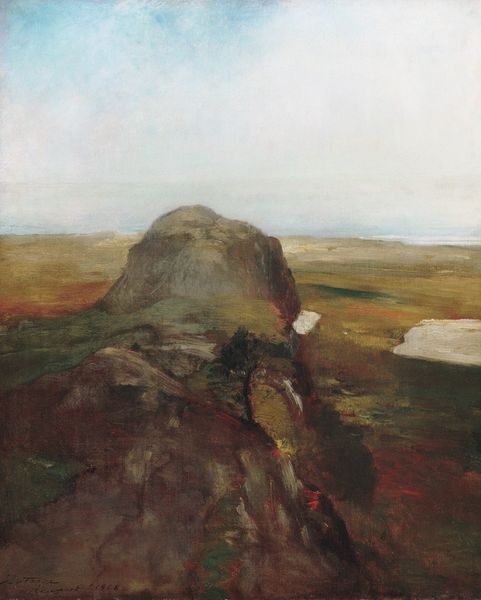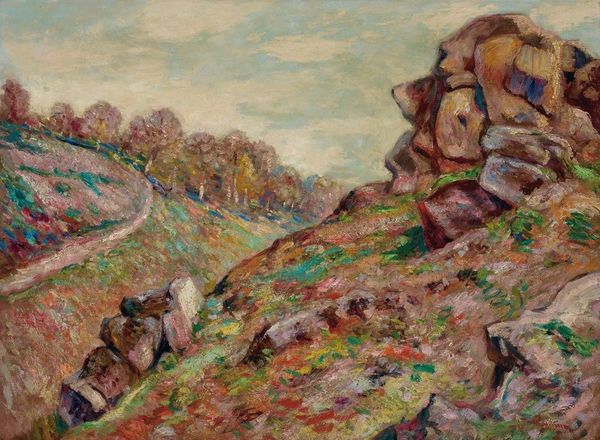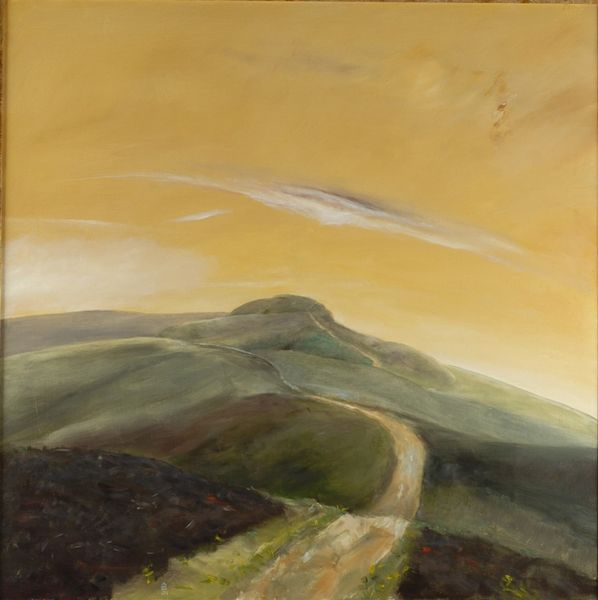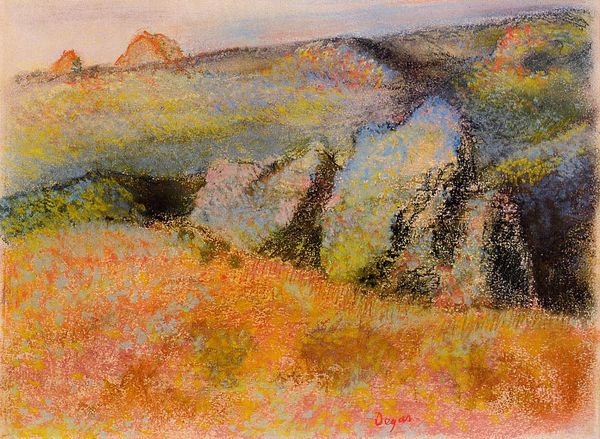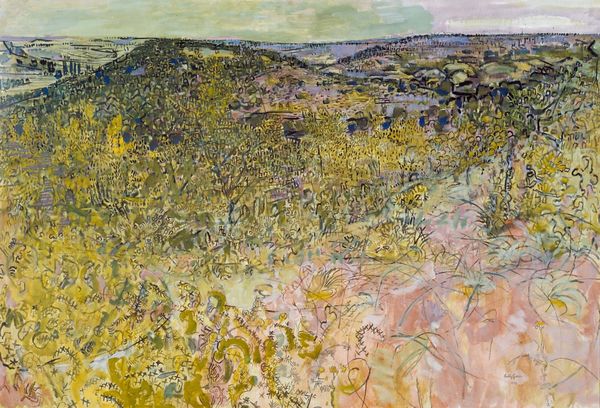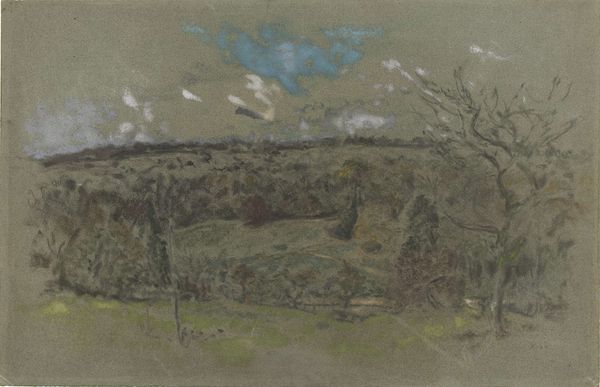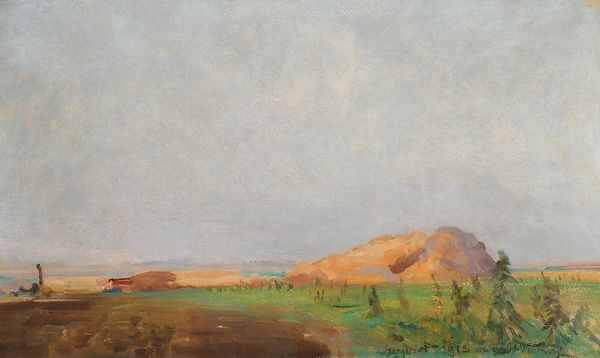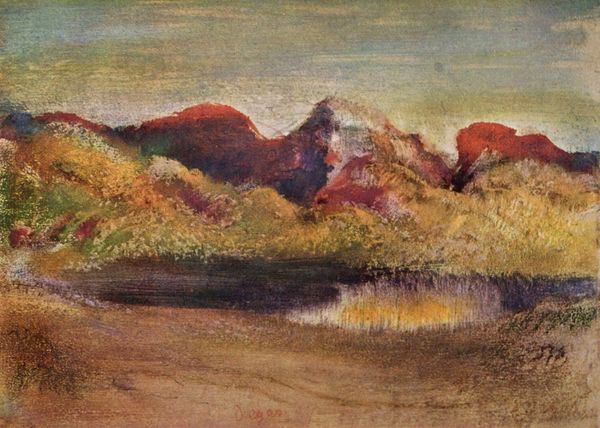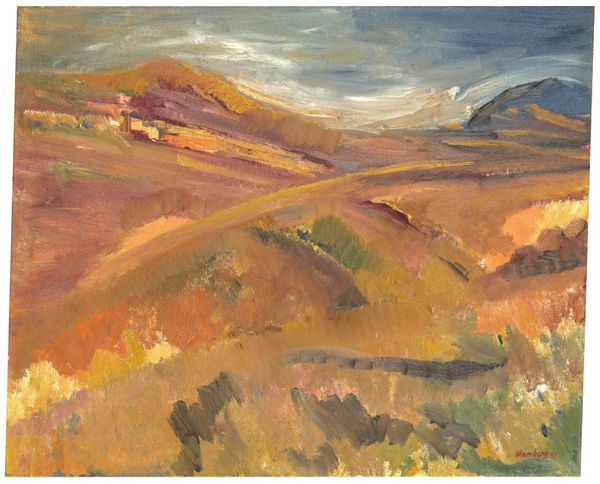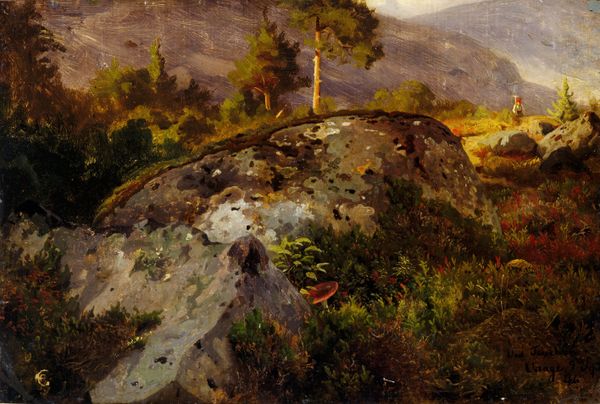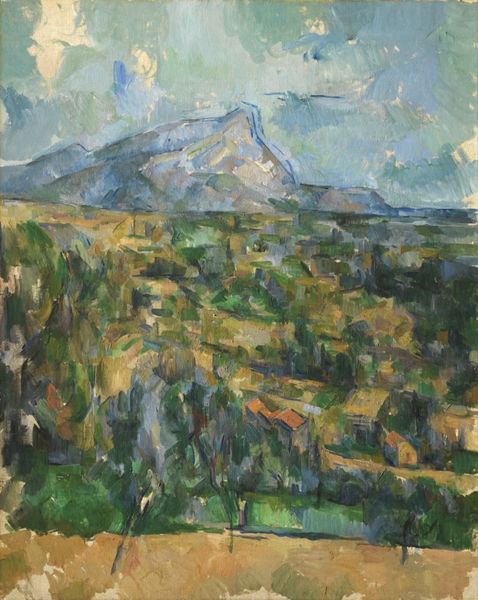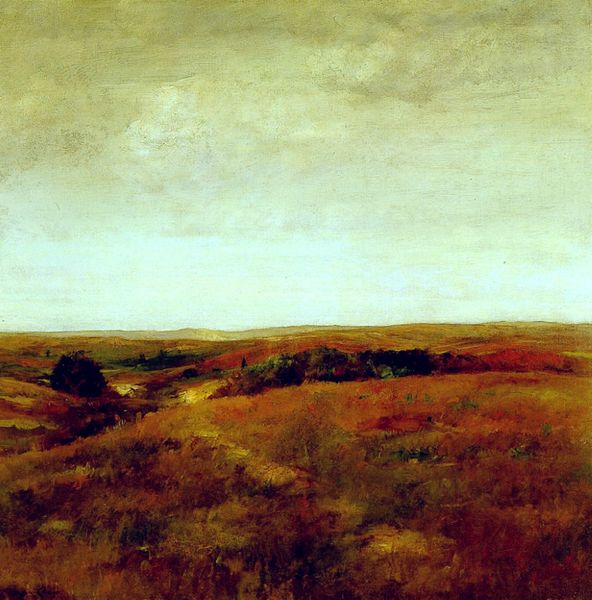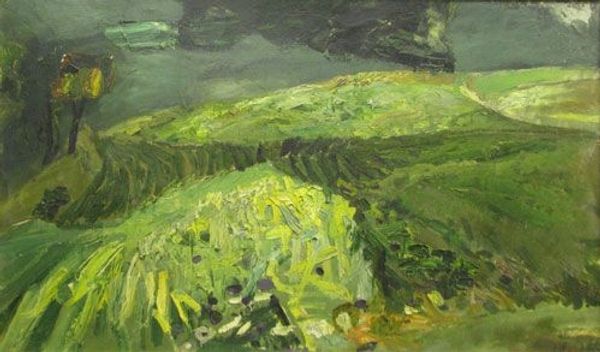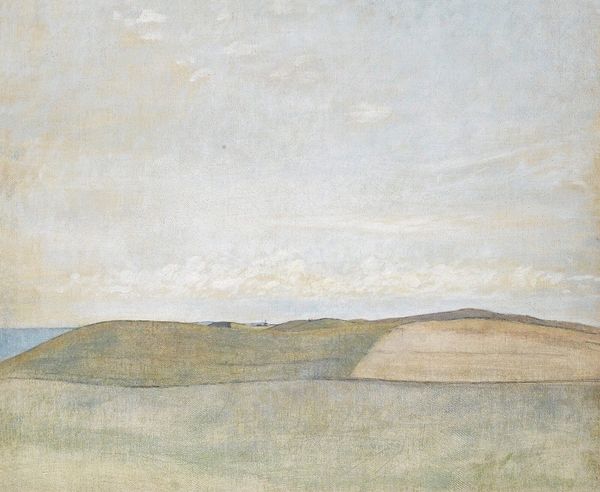
Copyright: Public domain
Curator: This piece is simply titled "Landscape," a pastel created by Edgar Degas around 1892. What strikes you first about this vista? Editor: I find it brooding, almost primal. Those vertical rock formations rising out of the landscape... they remind me of ancient monoliths, imbued with the power of the earth. The hazy distance adds to the timeless quality. Curator: Yes, the geological formations feel significant, especially within the artistic milieu of the late 19th century, where representations of the landscape increasingly intersected with ideas about national identity and the perceived natural order. Editor: They seem almost like standing stones. In many cultures, such stones are seen as symbols of connection to the divine, or markers of important places. Are we meant to imbue this space with some similar symbolic importance? Curator: Degas' relationship to Symbolism is fascinating here, since that movement was really taking off around this time, exploring inner, psychological realities and their link with the visible world. He does flatten the scene, perhaps highlighting the flatness as commentary on patriarchal structure in his period. Editor: Interesting. While the overall feeling is one of grounded permanence, the colours are soft, almost dreamlike. He's created a kind of mystical natural world. What social issues was he referencing? Curator: Think of this work as part of a larger discourse interrogating concepts of land ownership, particularly how women were barred from participating in the conversation, and often deemed subordinate to property itself, just as these natural landmarks are anchored to it. In the Impressionist focus on immediate sensory experience, there’s still this implicit tension surrounding the experience of landscape. Editor: A tension indeed. But still, seeing those shapes reaching upward makes one consider human desire to transcend something very down to earth, I’ll admit. There is hope and connection expressed, but tempered with your social perspective, as I will bear in mind going forward. Curator: These landscapes give us a unique way to reconsider well-worn assumptions that define art history as something settled rather than something still unfolding and up for negotiation. Editor: A fitting sentiment! We can continue our reflections, and our audience can begin their own now.
Comments
No comments
Be the first to comment and join the conversation on the ultimate creative platform.
